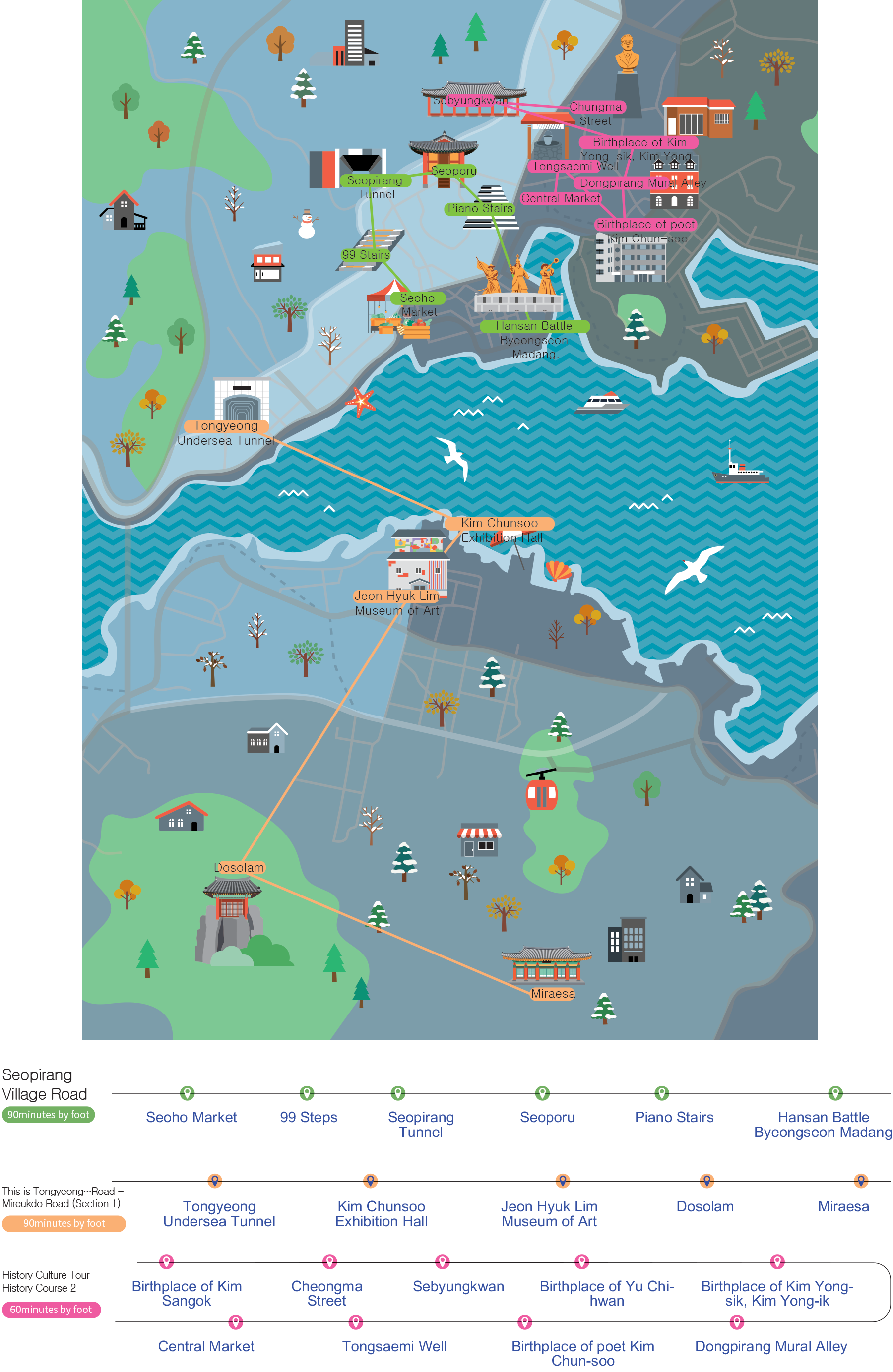
- Water, Nature and Humankind
- Travel for Save the Earth
-
 ‘Carbon Free Island’ Yeondaedo Island in Tongyeong
‘Carbon Free Island’ Yeondaedo Island in Tongyeong
that captures the spotlight by being eco-friendly
- Text and photo by. Lee Si-mok(travel writer)
- The expression “taking a trip” refers to the act of travelling to a certain place to stay there and enjoy whatever it has to offer. Experts’ estimate that trips and excursions of all kinds generate about 2.1billion tons of carbon dioxide every year. So how about going on a ‘carbon-free trip’? If you don’t know where to start, why not check out Yeondaedo Island. With the construction of a solar power plant in 2011, Yeondaedo Island became the first eco-island in South Korea to achieve energy self-sufficiency. It was able to “shine” for a long time because it decided to utilize the harmless energy of the Earth before any other place in the country. This winter, let's enjoy a "carbon-free trip" to Yeondaedo Island to see how the now globally popular eco-friendly energy is generated on the island.
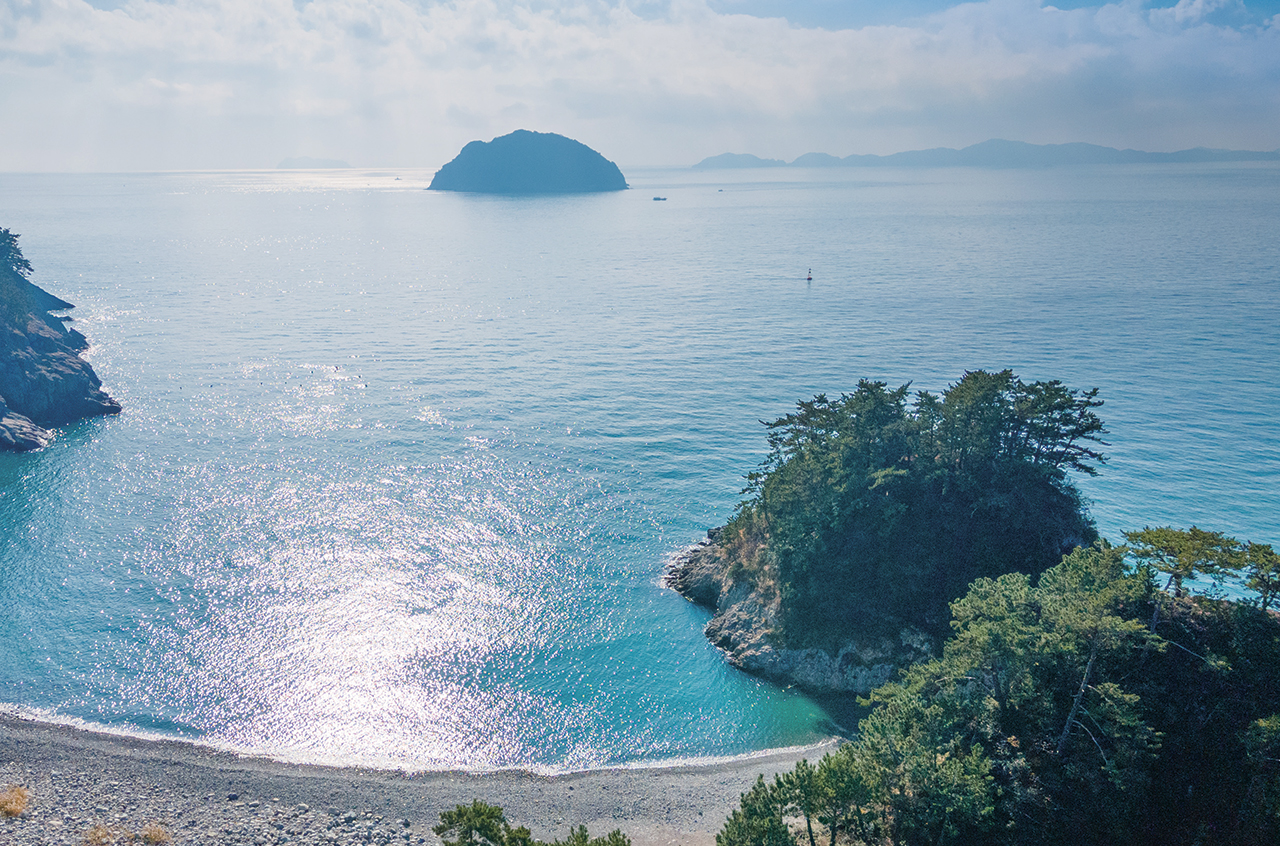
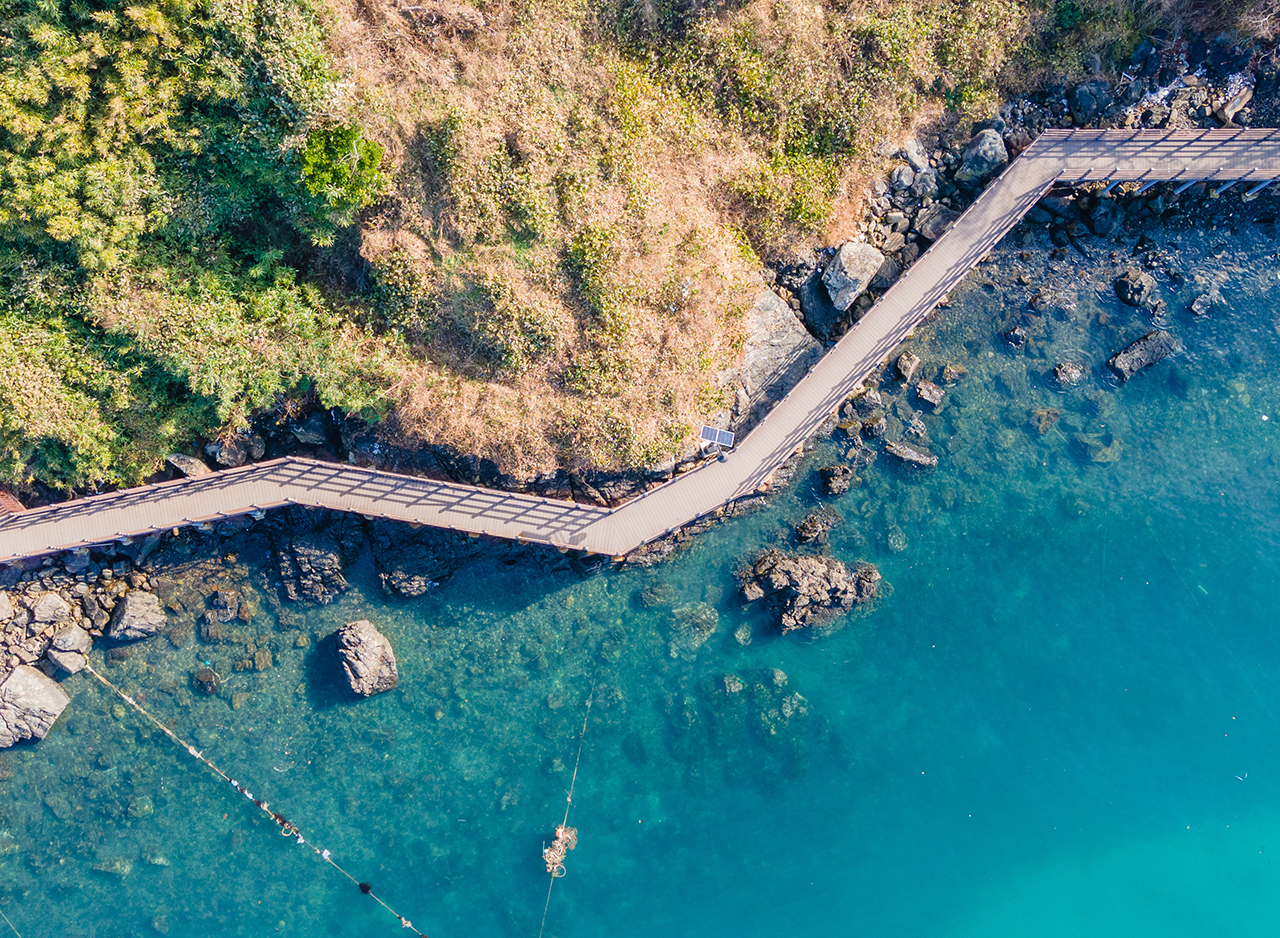 1. The beach deck road that takes people from the village to the Eco Park
1. The beach deck road that takes people from the village to the Eco Park
Yeondaedo Island, dreaming ‘fossil-free energy’
I once heard it on the grapevine that there were people who cooked and watched TV with solar power. But nobody paid much attention, thinking, "There’s no way that could be true." Then, back in 2012, I turned on the TV and quite by chance saw a show about Yeondaedo Island.
Yeondaedo is an island village whose inhabitants get all their heating and cooling supplied, cook their food, and do their laundry with solar power. The rumor spread that the islanders’ monthly electric bill never exceeded 1,000per month, and there were more incredible rumors that even without heating it didn’t get cold on the island. How often is it that city-dwellers never have to worry about paying the heating bills during winter? Since a typical monthly electricity bill often exceeds 200,000won even when heating is used simply to keep warm in the cold rather than to enjoy comfortable warmth, if the rumor is true, we should be envious of the islanders. That is why I set foot on Yeondaedo Island only half-convinced, even though I had seen the reality on television.
Yeondaedo Island's energy self-sufficiency is truly a superhuman achievement.
“Our village has returned its oil drums!”
“That’s what you’ve come for, isn’t it?” The solar power plant was located on the mountain behind the village, just as the road signs indicated. Locals like to refer to the solar power plant that protects the beautiful island village as a filial daughter, like the legendary Simcheong, because the island’s solar power plant is a renewable energy facility that faithfully generates a total of 150kW of electricity or 3kW for each and every household. As a result, both the cost of using fossil fuel derived energy and the volume of carbon emissions have dropped significantly on the island. According to the village head of Yeondaedo Island, “Ever since the construction of the solar power plant in 2011, the average electricity bill for a household on our island is just 20% that of other districts. Furthermore, our village felt no need to accept the free petroleum supplied by the city government during winter, so we returned the oil drums.”
This wasn’t the only thing that made a deep impression on me. The Visitors Center, which comes into view as soon as one leaves the dock, is also special. This building, which houses the Village Center, was the first public building to acquire the “passive house” certification in South Korea. This certification is given to buildings that adopt advanced insulation methods in order to minimize energy waste/emissions. The certification is awarded to buildings with annual heating energy requirements of 1.5(ℓ/㎡) or less.
The annual heating energy requirement for the island’s Visitors Center is 1.0(ℓ/㎡), in other words, far less than the 1.5(ℓ/㎡) target. This shows how well the building is insulated. What's amazing is that ‘Gudeul’, the village’s Senior Citizens Center, and the Eco Island Experience Center(renamed Eco Park), which are situated next to the business center, are also passive houses. As one might expect of buildings designed as solutions to climate change and the energy problems affecting the whole earth, their interior spaces remain pleasantly warm even in winter.
-
 2. Yeondaedo Island’s Visitors Center was the first public building in South Korea to receive the “passive building” certification.
2. Yeondaedo Island’s Visitors Center was the first public building in South Korea to receive the “passive building” certification.
-
 3. A door plaque that has become a symbol of the village on Yeondaedo Island.
3. A door plaque that has become a symbol of the village on Yeondaedo Island.
An island that deserves the title of "Carbon Zero Island"
When Yeondaedo Island became a "Carbon Zero Island," small changes began to take place in the village. About fifty houses were decorated with attractive door plaques, and a walking path(‘Jigetgil’) was created around the village. In 2015, a suspension bridge was opened that connects Manjido Island with Yeondaedo Island. In 2012, the island received the Presidential Award at the Korea Space Culture Awards in recognition of its successful implementation of the “energy zero” concept.
The door plaques in particular received a lot of interest from visitors from the mainland. You might wonder why having door plaques is something worth bragging about, but those of Yeondaedo Island are truly unique. For example, there is a plaque bearing the phrase “This is the house of Lee Do-tae, who could dance for three days straight on a tourist bus, and be up and ready to go to work the next morning.” For those who are interested, the plaques are likable because they allow one to see the person behind them as well as the traces of their lives.
This friendliness can also be found in abundance along the ‘Jigetgil Trail’. This path, whose name almost means “a route for ferrying human feces”, was originally travelled by workers who carried loads of wood on A-frames(Jige) mounted on their backs, as the name suggests. It is 2.3kilometers long and it takes about 1.5~2hours to complete. The section of the walking trail that starts from the entrance to the power station entrance and leads to the Eco Park offers an easy and enjoyable stroll among the best scenery. Walking at a leisurely pace, along a path filled with green bean ferns, is as soothing as walking carefully across pebbles that make crunching sounds while stepping on them. It’s even more enjoyable knowing the island has an environment and an attitude that don’t hurt the Earth and an energy system that benefits a healthy Earth.
- 4 Promises for
Yeondaedo Island - How to travel smartly with ‘Zero Carbon’
-
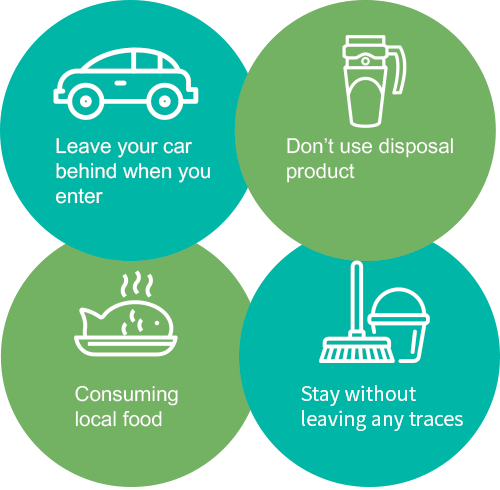
-
How to get the most out of your trip to Yeondaedo Island (‘Carbon-Free Island’)
Participation in the ‘Carbon-Free Trip’ program
This is a special travel program jointly developed by the Korea Tourism Organization and Tongyeong. Teams composed of 2 to 4 persons can participate in this small-scale eco camping event that takes place on Yeondaedo Island for two days. During their stay on the island, the participants will get to enjoy a ‘carbon-free trip’ by complying with three restrictions: “Do not use fossil fuels”, “Do not use disposable products” and “Do not generate unrecyclable wastes”, as well as cooking and eating exclusively local foods. In addition, participants can enjoy programs like ‘Beach Combing Upcycle Contests’, the ‘Unplugged Concert’, and ‘Island Village Star Gazing Trip’. Anyone interested in participating in the ‘Carbon-Free Trip’ program can reserve a place in advance by visiting the Tongyeong Eco Park homepage(ecopark.yeondaedo.kr).
 Tongyeong’s Top Attractions
Tongyeong’s Top Attractions

-
A garden of light that comes to life at night!
DPIRANG
In Tongyeong, the ‘Sampirang’ have become a must-visit destination for tourists. The word ‘Sampirang’ refers to “three cliffs”(‘pirang’ means ‘cliff’ in Korean) in Tongyeong, namely, Dongpirang, Seopirang, and Dpirang, of which the latter is the top attraction. Dpirang is an imaginative nighttime festival in which Dongpirang murals are gathered at Nammangsan Mountain to create a garden of light by combining digital technology, media art, and works that showcase the local colors of Tongyeong, by local artists such as Jeon Hyuk-rim and cabinet-maker Kim Jong-ryang. These two artists are artistic ambassadors of Tongyeong. Dpirang, the country’s largest digital theme park, is popular with the general public because of its many beautiful sceneries.
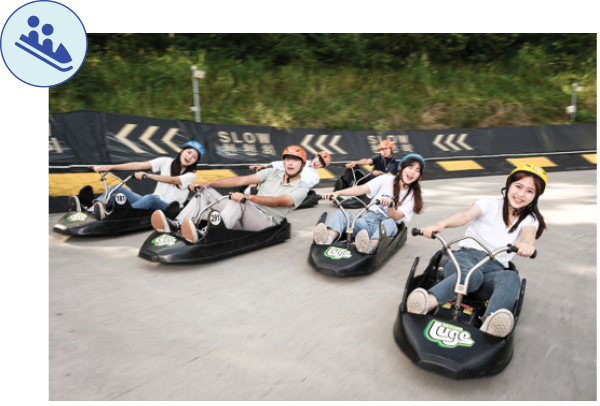
-
Experience the thrill of speed even without the snow
Tongyeong Luge
In 2020, the tourist facility most searched by visitors to Tongyeong was the Tongyeong Luge, which introduced this leisure activity to South Korea in 2017. It is a downhill sledding park where visitors can descend the track at high speed while enjoying panoramic views of the nearby city center and the sea. The luge’s winding curves and 360-degree turning sections make the ride absolutely thrilling. Because the riders control a specially designed cart that is propelled down the track by the force of gravity, the luge can be ridden easily and safely by people of all ages.

-
As realistic as being in the movies
Tongyeong VR Zone
The Tongyeong VR Zone is a three-story experiential center equipped with the latest VR technology where visitors can enjoy eleven different types of contents. On the 1st floor of the Tongyeong Tourism Experiential Zone, you can become a seagull and soar over Tongyeong’s major tourist attractions, while at the Historical and Cultural Experiential Zone located on the 2nd floor, you can travel back in time 400years ago to the site of the Samdo Naval Control Center commanded by Admiral Yi Sun-sin.
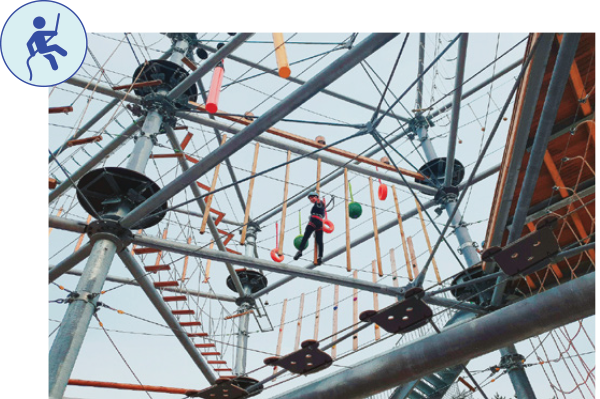
-
Enjoy it with your whole body!
Tongyeong Adventure Tower
If you are seeking a special adventure, the Tongyeong Adventure Tower might be the perfect place for you. The Tongyeong Adventure Tower is a 15-meter-high hexagonal tower where players can take part in adventure leisure sports featuring 94 obstacles. There are more than 90courses of varying levels of difficulty(beginner, intermediate, expert) for men and women of all ages to enjoy. The Quick Jump, which has become a very popular attraction solely through word of mouth, is a thrilling bungee jumping course where visitors jump from a height of approximately three stories.
 List of Tasty Eateries in Tongyeong
List of Tasty Eateries in Tongyeong
-
-

-
Fisherman’s House(Yeondaedo Island)
Fisherman’s House is a restaurant operated by Seo Taedong and his son, fifth-generation residents of the island. It specializes in fresh sashimi and all sorts of seafood. The menu’s recommended dishes are the sashimi platter and raw conch sashimi. Palm-sized raw conch is particularly popular due to its crunchy texture and light and sweet taste.
-
-
-
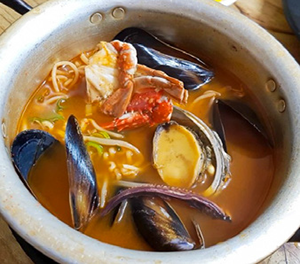
-
Aunt’s Original Abalone Seafood Ramen Restaurant(Manjido Island)
This restaurant was the first one on Manjido Island to sell Abalone Seafood Ramen. After pouring the owner's secret spicy yet savory broth into a yellow brass bowl, the ramen are boiled with large abalones and mussels and blue crab. You’ll not be able to stop yourself from wolfing down a bowl of this tasty dish very quickly.
-
-
-
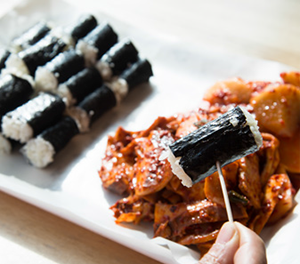
-
Fat Grandma’s Gimbap House(Downtown Tongyeong)
Chungmoo Gimbap is really simple to make. A small gimbap wrapped only white rice and served with seokbakji and squid muchim is all there is to it. There is no original gimbap eatery because ships’ crews took gimbap in lunch boxes. But Fat Grandma’s Gimbap House is the most famous one.
-
-
-

-
Ohmisa Honey Bread(Downtown Tongyeong)
Ohmisa Honey Bread is the oldest honey bread bakery in Tongyeong. Honey bread is a type of doughnut that is made by mixing red bean paste with flour dough, frying it, adding starch syrup to it, and then sprinkling it with sesame seeds. It’s great as a snack when you enter or leave the island. But the honey bread here gets sold out fast, so you’d better hurry up.
-
How to enjoy Tongyeong 100 times over
Stroll along 3 themed paths where you can be immersed in beautiful nature and view the culture of Tongyeong in a single glance.
